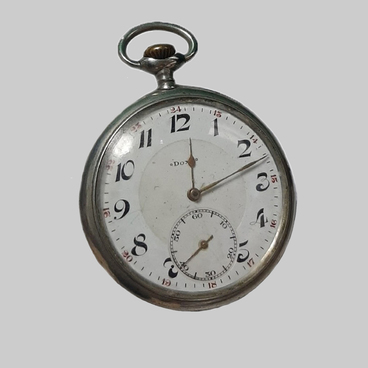Here is a copper sugar bowl made at the Samovar Factory of Plated Silver of Alexander Ksimantovsky. Ksimantovsky came from a wealthy family and was in the Second Merchant Guild. The manufacturer had his own house in Moscow on Basmannaya street. In 1839, he opened a factory in Moscow for plated silver. The company specialized in Russian samovars, but also produced cutlery, vases, jugs, sugar bowls, and other utensils that were in demand among the nobility and merchants. The factory’s products took part in industrial and trade exhibitions. Items made at the Ksimantovsky factory occur rather rarely, since the company did not last long.
The presented sugar bowl perfectly complements the composition with a copper samovar. Copper ore mining and copper smelting became one of the first types of industrial production developed in Russia. The production of copper ware became widespread under Peter the Great. They cast copper cast iron and samovars before, but only by the piece. This was done by serf craftsmen in rich boyar houses. Later, the Morozov, Turchaninov and Stroganov dynasties made the production of copper tableware mass-produced. This led to the fact that copper basins for cooking jam, samovars, mortars, and plates appeared not only in rich homes, but also in ordinary families of ordinary people, burghers, and peasants.
In Russia, until the early 1850s, there was only one method of silvering, i.e. the so-called plated silver method. The technology was as follows. A thin layer of silver was soldered to a red-hot copper substrate, and then rolled by a press. Such an item thus produced was called clad. Clad products include a sugar bowl from the museum’s collection.
In the early 1850s, a revolutionary method of electroplating silver on a metal substrate appeared. It involved a high-voltage electrolysis process. Electroplating silver and white alloys of nickel replaced the plated silver technique, and the Ksimantovsky factory was supplanted by other manufacturers. Still, the samovars of this factory remained well-known.
The presented sugar bowl perfectly complements the composition with a copper samovar. Copper ore mining and copper smelting became one of the first types of industrial production developed in Russia. The production of copper ware became widespread under Peter the Great. They cast copper cast iron and samovars before, but only by the piece. This was done by serf craftsmen in rich boyar houses. Later, the Morozov, Turchaninov and Stroganov dynasties made the production of copper tableware mass-produced. This led to the fact that copper basins for cooking jam, samovars, mortars, and plates appeared not only in rich homes, but also in ordinary families of ordinary people, burghers, and peasants.
In Russia, until the early 1850s, there was only one method of silvering, i.e. the so-called plated silver method. The technology was as follows. A thin layer of silver was soldered to a red-hot copper substrate, and then rolled by a press. Such an item thus produced was called clad. Clad products include a sugar bowl from the museum’s collection.
In the early 1850s, a revolutionary method of electroplating silver on a metal substrate appeared. It involved a high-voltage electrolysis process. Electroplating silver and white alloys of nickel replaced the plated silver technique, and the Ksimantovsky factory was supplanted by other manufacturers. Still, the samovars of this factory remained well-known.


